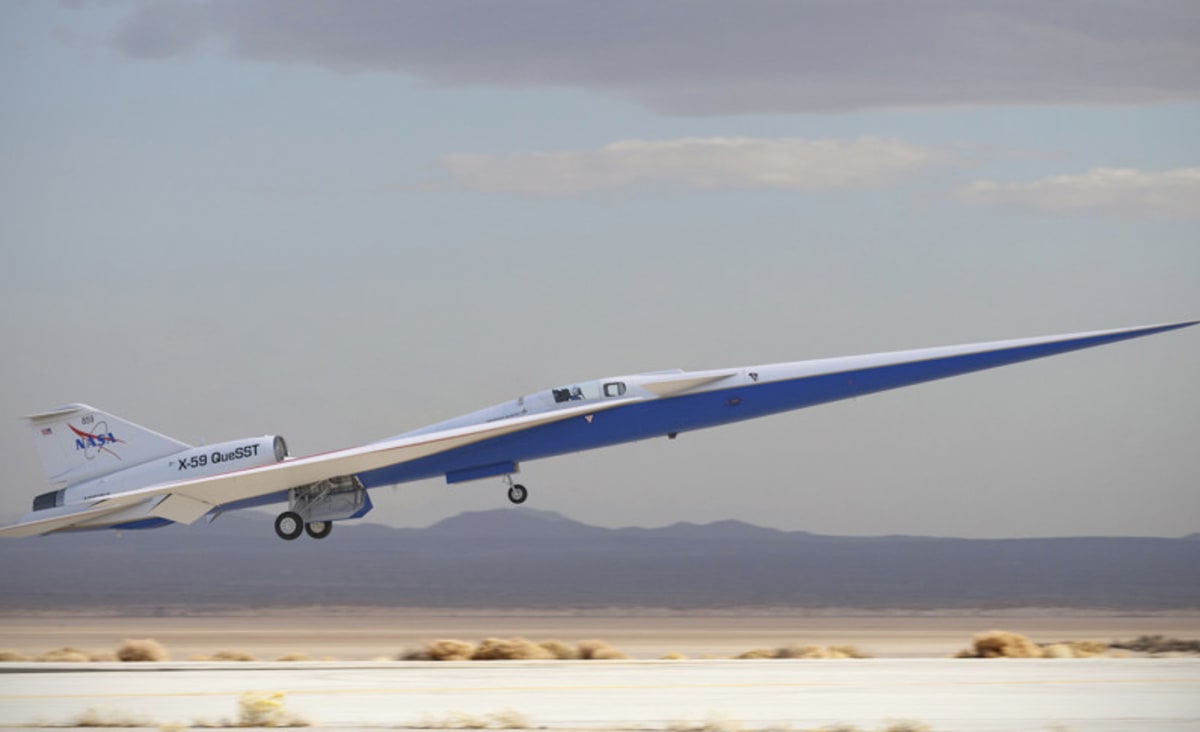
interestingengineering.com
NASA will soon test how quiet its X-59 really is over populated areas
NASA plans to fly its X-59 prototype over populated areas in 2024, putting the X-59's "quiet" supersonic boom to the test.
Science & Tech
NASA's X-59 aircraft is designed to reduce the sound of sonic booms, allowing supersonic aircraft to surpass the speed of sound (767 mph) while flying over populated areas. And it will soon be put to the test, the space agency explained in a press release.
One of the issues with the Concorde — prior to its retirement in 2003 — was the fact that it would have to wait to leave city spaces and even sparsely populated areas before accelerating to Mach 1, as the sonic boom could damage property on the ground.
Now, NASA's X-59 could transform aviation by allowing supersonic aircraft to accelerate to those incredibly high speeds right after takeoff. The aircraft uses a thin 30-foot-long nose to lower the sound of the sonic boom.
In its latest update on the X-59, NASA announced several upcoming milestones, including its plan to fly the Lockheed Martin-produced X-59 QueSST prototype "over select communities to gather information about how the public perceives the quiet noise the X-59 is designed to produce (early 2024)."
A "quiet" sonic boom
NASA recently conducted the first successful tests of X-59 at its Glenn research facility following its assembly and transferral to Texas in December last year. The next milestone will see NASA and Japanese space agency JAXA take independent measurements of a small-scale model before comparing results. All going to plan, a target date will then be set for the first flight, expected to take place later this year.
The U.S. space agency will then conduct acoustic validation flights in 2023, followed by the planned community overflights in early 2024. After that "NASA plans to deliver results of the community overflights to the International Civil Aviation Organization and Federal Aviation Administration in 2027," the space agency said in its statement. "With that information in hand, regulators will be able to decide if a change should be made in rules that prohibit supersonic flight over land – a decision that would be expected in 2028."
NASA isn't the only company planning to take supersonic aircraft to the skies once again. In an interview with IE last year, senior vice president of Boom Supersonic Brian Durrence said his company aims to "remove the barriers to experiencing the planet." The company wants to build a fleet of supersonic aircraft that utilize sustainable aviation fuels and also minimize noise, compared to the Concorde, the reference point for supersonic passenger airliners. It hopes to begin carrying passengers by 2029.
If NASA and other private firms have their way, we may soon see commercial supersonic airliners take to the skies once more, drastically reducing travel times and reducing the barrier to entry for travelers worldwide while quietly breaking the sound barrier — at least compared to its predecessor.
























































